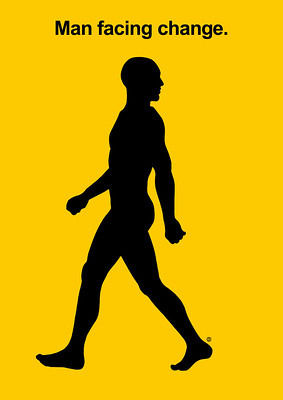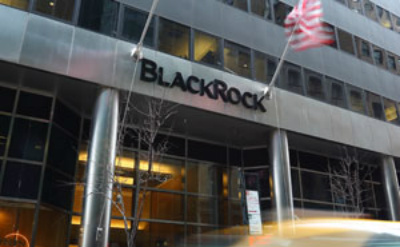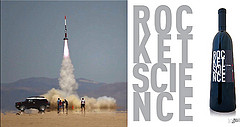|
|
|
Wednesday, March 11th, 2020

As we saw yesterday, business is learning the hard way that walking their corporate responsibility talk is vital to their very survival.
They aren’t the only ones out of touch.
John C. Williams, the president of the Federal Reserve Bank of New York, said in a speech last month that “there is still time to avert this fate.” Moving inflation up and keeping it there could convince millennials, he said.
“In this case, it’s fortunate that the young are impressionable.”
“Fate” refers to the potential economic mayhem that could result from the high savings rate among Millennials looking to retire ASAP. “Impressionable?” I wonder how long it’s been since he actually knew any of the “young.”
Powerful men who have seen women as things to do with as they please are thinking twice in the wake of #metoo and Harvey Weinstein’s conviction. Hopefully that caution will trickle down to the rank and file bosses who still seem untouchable, although that’s unlikely.
Big Tech is no longer seen a solution to the world’s problems, but, in many cases, as their cause.
Startups are learning that public investors, whether knowledgeable or casual, are still hung up on mundane ideas like profit as opposed to their beloved EBITDA.
Founders, too, are rethinking their actions. Thanks to high profile cases, such as Travis Kalanick (Uber) and Adam Neumann (WeWork), and a much savvier workforce, visions and charisma are no longer enough.
One might look at all this and say, “the world is changing,” although a more realistic view could be summed up as “too little, too late.”
Image credit: CHRISTOPHER DOMBRES
Posted in Communication, Culture, Personal Growth, Politics | No Comments »
Tuesday, March 10th, 2020

I wrote yesterday’s Oldie back in 2007; it ended with this comment,
Corporate responsibility is a major buzzword these days, but it’s hard to tell whether it’s tied more closely to
- doing what’s right;
- doing what you can get away with; or
- not getting caught.
It’s taken 13 years for practitioners of the second and third approaches to even consider changing.
The pressure they face to take such steps is real; the industry’s years of reliance on hypocrisy, lobbying, and misleading public relations tactics is eerily reminiscent of the approach taken by tobacco companies, and its litigation risks are set to follow a similar trajectory, with lawyers and activists framing failure to address climate change as a human-rights violation.
The changes certainly aren’t being driven by the Feds (consider the EPA’s decision to limit scientific research when drafting environmental and public health regulations), but by people.
The corporate responsibility façade is—finally, thankfully—crumbling. Activist investors and angry citizens have forced a reckoning. The Conference Board views the upcoming 2020 proxy season as a tipping point for disclosure of corporate political activity.
Even more potent are Gen Z’s and many Millennial’s attitude on choosing a place to work.
Young graduates evaluating prospective employers know that the true narrative of a corporation’s purpose can be found by reviewing who it does business with and which politicians it backs [emphasis mine].
There is no company that can survive without an adequate workforce and there is no Generation in history as suspicious and downright cynical about corporate America, including Big Tech, unicorns and startups in general than Gen Z — an attitude already infecting other generational segments.
Amazon employee reaction to CEO Jeff Bezos’ climate change initiative is a good example.
Amazon Employees for Climate Justice responded to Jeff Bezos’s recent $10 billion commitment to fight climate change by reminding their CEO that “one hand cannot give what the other is taking away.”
That two-faced approach isn’t unusual; in fact, it’s common practice — more plainly described as talk the talk, but screw the walk.
It will be difficult for that approach to continue working when it seriously limits recruiting efforts, not to mention paying customers.
Image credit: Frits Ahlefeldt
Posted in Communication, Culture, Ethics, Hiring, Retention | No Comments »
Monday, March 9th, 2020

Poking through 14+ years of posts I find information that’s as useful now as when it was written.
Golden Oldies is a collection of the most relevant and timeless posts during that time.
Jack Welch died recently and Jeff Immelt is also gone from GE, but at the time, they were a good example of two sides of corporate responsibility — one who talked and the other who walked.
Read other Golden Oldies here.
If you’re a long-term reader you’ll know that I’m not a big fan of Jack Welch, while I am of Jeff Imelt—two guys with very different MAP.
Knowledge@Wharton made this comment as background in describing what Judy Hu, global executive director for advertising and branding, is doing to publicize the “new” GE.
Since becoming boss in 2001 — just a few days before September 11 — Immelt has aimed to make GE not only an innovator but also an environmental leader. In doing that, he has broken with his predecessor, Jack Welch, but also, in some ways, taken the company back to its roots. Thomas Edison, inventor of the light bulb and the phonograph, started GE in the late 1800s. More recently, under the combative, controversial Welch, it came to be known for operational excellence and a brassy pugnacity.
Welch famously declared that GE would have to be no. 1 or 2 in every line of business in which it competed and would ditch divisions where it wasn’t. And he battled state and federal regulators for years over their order that GE clean up carcinogenic waste that its factories had dumped into New York’s Hudson River. Under Immelt, the company hammered out an agreement to dredge the still-polluted river bottom. “Jeff said, ‘We’re going to fix that and move forward,’”
I find this ironically amusing after reading various articles where Welch was talking about corporate responsibility.
Corporate responsibility is a major buzzword these days, but it’s hard to tell whether it’s tied more closely to
-
- doing what’s right;
- doing what you can get away with; or
- just not getting caught.
Image credit: Willem van Bergen
Posted in Culture, Leadership | No Comments »
Wednesday, February 19th, 2020

Maybe it takes tech to beat tech.
Or founders who plan to walk their talk even after them become successful, unlike the “don’t be evil” guys.
More entrepreneurs are pursuing social or environmental goals, said Greg Brown, a professor of finance at the Kenan Institute of Private Enterprise at the University of North Carolina.
Companies like Toms, Warby Parker and Uncommon Goods have pushed this concept into the mainstream by creating successful business models built around helping others. This trend has led to the rise of B Corporations, a certification for companies that meet high standards of social responsibility. The program started in 2007, and now more than 2,500 companies have been certified in more than 50 countries.
Including Afghanistan.
Not all these startups make it and many are choosing to do it sans investors who often start pushing for growth and revenue, social mission be dammed.
And they are slowly succeeding.
Companies like Moka are a reflection of how consumers think as well, Professor Brown said. As people’s wealth increases, they think more about quality and less about quantity. They also consider the social context of what they’re buying.
Others are developing tech to defend against tech.
The “bracelet of silence” is not the first device invented by researchers to stuff up digital assistants’ ears. In 2018, two designers created Project Alias, an appendage that can be placed over a smart speaker to deafen it. But Ms. Zheng argues that a jammer should be portable to protect people as they move through different environments, given that you don’t always know where a microphone is lurking.
These may not be the solution, assuming there is one, but this definitely isn’t.
Rather than building individual defenses, Mr. Hartzog believes, we need policymakers to pass laws that more effectively guard our privacy and give us control over our data.
You have on to consider tech’s actions in Europe to know that laws don’t stop tech.
There’s another potential positive brewing in tech — actually a disruption of sorts.
That’s the long-time coming move away from current ageist thinking.
As brilliant as young coders are, though, the industry can’t survive on technical chops alone. Last year, Harvard Business Review shared that the average age of a successful startup founder isn’t 25 or 30—it’s 45 years old.
Call it a miracle, but investors, the majority over 40, are starting to value the experience that comes with age.
Hopefully, in the long-run, the potential for success will outweigh the hang-up on age.
As a whole, entrepreneurial communities also need to do more to bring diverse groups to meet-ups, panels and speaking engagements. The importance of having more voices at the table can’t be diminished.
Let’s just hope it isn’t too long.
Image credit: Ron Mader
Posted in Culture, Entrepreneurs, Motivation, Retention | No Comments »
Friday, April 12th, 2019

A Friday series exploring Startups and the people who make them go. Read all If the Shoe Fits posts here.
Obviously, opportunity and entrepreneurs go together.
There are dozens, if not hundreds, of opportunities that could serve as the basis for a company.
It is a wise entrepreneur who at least tries to consider the long-tern implications of the opportunity they choose.
Not just the financial potential, but the possible effects on society and the world.
While no one can see the future, there is one thing you can count on happening.
Humans will act the same way online as they do in the real world — only more so.
More so, because they can indulge their worst thoughts/desires with little-to-no chance of repercussions and a much broader reach.
Anything that has ever been done offline will be done — more so.
Political dirty tricks will get dirtier, bullying will be more vicious, the haters will be more active, and on and on.
Could Mark Zukerberg have foreseen this when he started Facebook?
Maybe not.
Did he try?
Probably not.
Did he even stop to think?
Unlikely.
Does he think about it now?
Only to deny it.
Image credit: HikingArtist
Posted in Entrepreneurs, If the Shoe Fits, Innovation | No Comments »
Tuesday, July 17th, 2018

Lots of good external reading today.
At every level, some of the toughest, most hard-headed, business people work for Blackrock; not surprising, since it is the world’s largest asset management firm, with more than $7 trillion under management.
That’s large enough to get most financial markets to sit up and take notice when it speaks — and speak it did early this year.
Larry Fink recently created a shockwave. As cofounder, chairman, and CEO of BlackRock, one of the world’s largest global asset management firms, in an open letter to CEOs he caught the attention of financial markets and beyond by insisting on the importance of companies serving a social as well as financial purpose.
The idea that corporations have a social responsibility to a much larger audience than their investors are heresy in the financial world.
But Fink can’t be ignored as a liberal do-gooder, especially when he backs his comments with hard data.
This was followed up a few months later by Jonathan McBride, managing director and global head of inclusion and diversity at BlackRock.
Blackrock hit the nail on the head with McBride’s title — not ‘diversity,” but diversity and inclusion.
Hiring a diverse workforce is actually the easy part, because there is a multitude of talented candidates available once you knock down bias, unconscious or not, laziness, and trying to substitute apps and AI, which carries the same bias as it’s creators, for human thought.
Changing attitudes so those hired are included, developed and utilized is the hard part.
Recently, the company distributed a booklet called BlackRock at Our Best: The Power of Diversity that captured the diversity and inclusion guidance that the company had been providing to its managers for about a year and a half. He said it was placed on every U.S. employees’ seat on International Women’s Day (March 8), which was also the last day of an extended company “jam.”
The booklet included research findings about diversity in business, which McBride describes as “a key unlock” for getting people on board. He said it shifts the burden of proof away from the individual person arguing for diversity, where it traditionally has been. Having hard data, he said, helps managers respond to questions such as “So has diversity ever worked?” or to statements implying that because a particular employee didn’t do well, diversity must be wrongheaded. And to those suggesting the company is fine as is — if it ain’t broke, why fix it? — you can hit the ball right back over the net. Said McBride: “The data says we can do even better.”
And that is the difference.
When you have hard data, not touchy-feely or do-the-right-thing arguments, and that data provides a proven path to more and better success for both individuals and the company as a whole, people will embrace it.
Keep in mind that diversity and inclusion is a way to improve business results, not a demand that people change their personal values.
People can believe anything they want as long as those beliefs don’t interfere with achieving their company’s objectives.
Image credit: Blackrock
Posted in Communication, Culture, Role Models | No Comments »
Thursday, February 23rd, 2017
 IBM Watson Health and Broad Institute launch major research initiative to study why cancers become drug resistant. Hi Folks,
I had the chance to attend one of the largest healthcare IT conferences this week in Orlando known as HIMSS or Healthcare Information and Management Systems Society.
What this mouthful of a name means is if you want a venue showcasing the cutting edge technology in healthcare with 40,000 of your closest friends…well you’re in the right spot.
I was there as a representative of my company and had a chance to have some meaningful conversations, but it was the conversations off the floor that were perhaps more valuable.
As anyone who has attended a convention of this size knows, you’re in for a menagerie of vendor sites and sounds. It can be overwhelming and enlightening
While I had some downtime I took a walk on the floor to see what else is occurring within the medtech sector.
During one of these occasions I had a chance to meet with some folks from IBM. Now IBM needs no introduction, but within healthcare they are a new entrant.
They have utilized their Watson cognitive thinking system to tackle some of the toughest problems in medicine today.
They are currently focused on oncology and determining patients at risk or treating mutations earlier than currently possible.
Something that struck me was the fact that this technology is very affordable to their customers. Their mindset is that all people, regardless of income, location, background or country should receive the same level of care as anyone else.
I was floored.
Healthcare is big business and while most mean well, the stated goals are not so noble.
Where did this culture come from at IBM?
As of now I don’t have that answer, but I wanted to at least inform you that a company of that size has genuine concern for the well being of us all.
Flickr image credit: IBM
Posted in Innovation, Ryan's Journal | No Comments »
Wednesday, November 19th, 2014

What do SAS; Warby Parker and Toms Shoes; FullContact; Petagonia have in common?
Flexibility, AKA work/life balance.
I’ve written about all of them and for the same reason—they get it.
They get that people are their most valuable asset; they get that replacing them costs far more than the cost of an ad; they get that top talent is looking for more than a fat paycheck.
Lisa Horn, who tracks workplace policies for the Society for Human Resource Management, which represents more than 200,000 members from the HR departments of companies around the world, said many businesses, which, since the Great Recession, have forced employees do more with less, are facing new realities: Millennials who value time for both work and life, and fierce competition for the most highly skilled employees who can easily jump ship for something better. “Already 87 percent of employees say flexibility and balance is important or very important in their next job. So it would behoove companies to adopt these strategies for competitive advantage.”
Companies that get it thrive and not just in the short term.
SAS has been doing it successfully since 1976; so much so that Google’s very own Larry Page and Sergy Brin visited to learn SAS’ approach.
Family-owned Patagonia has doubled in size and tripled in profits since 2008; it has 2,000 employees around the globe and minimal turnover.
A comment from TSD (10/24/2014 5:38) on the Petagonia article sums it up nicely.
I never have figured out why treating your workers well is such a hard concept for so many businesses. I work harder and faster and better when I’m happy and not terrified. Granted, I’ve never owned a business, but it seems pretty simple. Miserable workers will not be productive.
It’s not rocket science—or maybe it is.
Flickr image credit: Steve Jurvetson
Posted in Culture, Motivation, Retention | No Comments »
Wednesday, September 25th, 2013

There is change afoot.
Workers today crave more from work than just a paycheck.
They want to work for, or start, companies that contribute to the greater social good, from encouragement and time to volunteer and sanctioned participation and support in various forms of fundraising to companies who (gasp) give up some profit in the name of “doing good by doing well.”
Candidates and customers flock to companies like Toms Shoes and Warby Parker that guarantee to donate an item for every item sold.
There was a time that companies seemed to give more of a damn about their communities and employees.
Yes it was more paternalistic and I’m not suggesting a return to that, but the enshrinement of greed in the name of profit goes deeper.
What happened?
Milton Friedman, his cronies and a media frenzy happened.
In 1970, Nobel Prize-winning economist Milton Friedman wrote an article in the New York Times Magazine in which he famously argued that the only “social responsibility of business is to increase its profits.”
And as that mantra took hold so did the attitude that the only stakeholders that mattered were shareholders.
The belief that shareholders come first is not codified by statute. Rather, it was introduced by a handful of free-market academics in the 1970s and then picked up by business leaders and the media until it became an oft-repeated mantra in the corporate world.
Which, in turn, entrenched Wall Street’s quarter-long, short-term thinking and gave rise to the Carl Icahns of the investing world.
Friedman’s statement gave tacit approval and wide latitude to corporate raiders, leveraged buy-out firms and others to do literally anything in the name of profit and investor returns.
Lynn Stout, a professor of corporate and business law at Cornell University Law School, said these legal theories appealed to the media — the idea that shareholders were king simplified the confusing debate over the purpose of a corporation.
And we, i.e., society, accepted that attitude for half a century.
The results can be seen every day and they aren’t pretty—unless you’re part of the so-called 1% (or even the top 25%).
While there is change afoot, it begs the question—is it too little too late?
Flickr image credit: 401(K) 2013
Posted in Culture, Innovation | No Comments »
Friday, September 3rd, 2010

How profitable can a company be that takes social responsibility to its extreme?
What kind of corporate social responsibility is possible if Wall Street isn’t breathing down your neck?
For answers you need look no further than India’s Tata and America’s SAS.
I’ve already written twice about SAS, its amazing culture and the lengths they go to to take care of their people.
And then there is Tata, where Ratan Tata, Chairman of Tata Group, built a culture of innovation after India dropped its trade barriers.
… for his companies to survive and thrive in a global economy he had to make innovation a priority—and build it into the DNA of the Tata group so that every employee at every company might think and act like an innovator.
Notice it says every employee, not just the stars, designers or engineers.
Obviously good culture and good business, but not really extreme.
Extreme social responsibility follows a different path. In 2000 Tata Tea Ltd. purchased Britain’s Tetley Tea Company and shortly after sold the vast plantations in an economically underdeveloped community where it had been the largest employer for a century.
But the transaction was anything but routine. Instead of working out a lucrative deal with eager investment bankers, bribing local politicians to mollify them, laying off workers, and selling to the highest bidder, as some other Indian companies shedding a moribund business might have done, Tata Tea sold 17 of the 25 plantations to its own former employees. Layoffs were generally limited to one per household, and Tata gave a group of voluntary retirees enough cash to buy equity in the new company that was formed. (That company, Kanan Devan Hills Plantation Company [KDHP], still operates as an employee-owned enterprise.)
Although Tata Tea would henceforth maintain only limited business interests in the area (including some equity in KDHP), the company continued its active social role there. It still subsidizes a range of social services and KDHP employee benefits, including free housing for plantation workers, a private school, an education center for disabled children and young adults, and the newly renovated Tata General Hospital in Munnar. Tata still remains a major customer of KDHP, which helps guarantee a stable supply of tea at competitive prices.
Tata’s extreme culture is simple.
Since its founding in 1868, Tata has operated on the premise that a company thrives on social capital (the value created from investing in good community and human relationships) in the same way that it relies on hard assets for sustainable growth.
And at $70 billion it certainly is thriving.
Extreme culture is long-term and looks well beyond the next quarter and short-term profits.
Extreme culture is successful, but not in the US—Wall Street would never allow it.
Flickr image credit: Tata Group
Posted in Business info, Culture | No Comments »
|
 Subscribe to
Subscribe to
MAPping Company Success
About Miki 
Clarify your exec summary, website, etc.
Have a quick question or just want to chat? Feel free to write or call me at 360.335.8054
The 12 Ingredients of a Fillable Req
CheatSheet for InterviewERS
CheatSheet for InterviewEEs™
Give your mind a rest. Here are 4 quick ways to get rid of kinks, break a logjam or juice your creativity!
Creative mousing
Bubblewrap!
Animal innovation
Brain teaser
The latest disaster is here at home; donate to the East Coast recovery efforts now!
Text REDCROSS to 90999 to make a $10 donation or call 00.733.2767. $10 really really does make a difference and you'll never miss it.
And always donate what you can whenever you can
The following accept cash and in-kind donations: Doctors Without Borders, UNICEF, Red Cross, World Food Program, Save the Children
*/
?>About Miki
About KG
Clarify your exec summary, website, marketing collateral, etc.
Have a question or just want to chat @ no cost? Feel free to write
Download useful assistance now.
Entrepreneurs face difficulties that are hard for most people to imagine, let alone understand. You can find anonymous help and connections that do understand at 7 cups of tea.
Crises never end.
$10 really does make a difference and you’ll never miss it,
while $10 a month has exponential power.
Always donate what you can whenever you can.
The following accept cash and in-kind donations:
|















